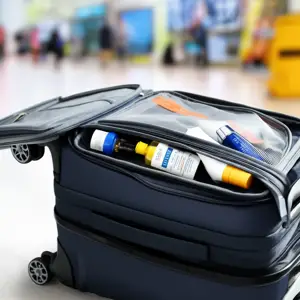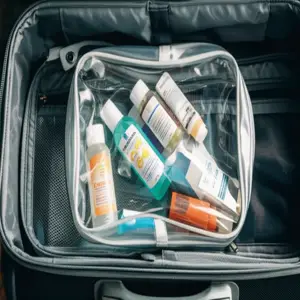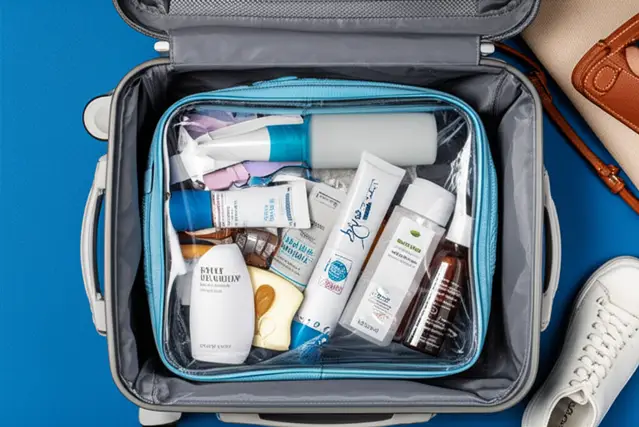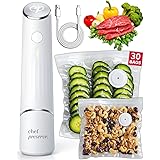Table of Contents
The Essential Guide to Airplane Skincare in 2025
Whether you’re a seasoned jet-setter or a first-time flyer, understanding the rules surrounding liquids, gels, and aerosols is paramount for a smooth airport experience. This guide dives deep into the regulations, offering practical tips and tricks to help you pack your skincare products safely and efficiently.Understanding TSA’s 3-1-1 Rule for Liquids
The Transportation Security Administration (TSA) has a set of guidelines known as the 3-1-1 rule that governs the transport of liquids, gels, and aerosols in carry-on baggage. This rule can seem confusing at first, but it’s actually quite straightforward:- 3.4-ounce (100ml) container limit: Each liquid, gel, or aerosol must be in a container that is 3.4 ounces (100 milliliters) or less.
- 1 quart-sized bag: All containers must fit into one clear, quart-sized plastic bag.
- 1 bag per passenger: Each passenger is allowed only one quart-sized bag.

TSA skincare rules
Exemptions to the 3-1-1 Rule: Medications and Baby/Child Care Items
While the 3-1-1 rule is generally strict, there are some exceptions for essential items like medications and baby/child care products.- Medications: Prescription and over-the-counter medications are typically exempt from the 3-1-1 rule. You can bring larger quantities of liquid medications, but it’s a good idea to have a doctor’s note or prescription label to show TSA agents if they ask.
- Baby/Child Care Items: Breast milk, formula, and other baby/child care items are also generally exempt. Again, it’s helpful to declare these items to TSA agents during the screening process.
Navigating International Flights: Variations in Rules
While the 3-1-1 rule is a standard practice in many countries, it’s crucial to be aware that regulations can vary depending on your destination and airline. Before traveling internationally, always check the specific rules and guidelines of the airports you’ll be passing through and the airline you’re flying with. Some countries may have stricter regulations regarding the types of liquids allowed or the size of containers. It’s always better to be safe than sorry and do your research in advance to avoid any unpleasant surprises at the security checkpoint. Tip: Websites like the TSA’s official website and the websites of major international airports provide detailed information on their security regulations.Packing Strategies for Your Skincare Products
Now that you understand the rules, let’s dive into practical packing strategies to ensure your skincare products arrive at your destination safely and intact.Choosing the Right Travel-Sized Containers
Investing in high-quality travel-sized containers is essential for a hassle-free travel experience. Look for containers that are leak-proof, durable, and easy to fill and clean. Here are some popular options:- Silicone Travel Bottles: These are flexible, lightweight, and resistant to leaks. They’re perfect for packing thicker liquids like shampoo and conditioner.
- Hard Plastic Bottles: These are more rigid and provide extra protection for delicate liquids like serums and toners.
- Small Jars: Ideal for creams, balms, and other solid or semi-solid products.
- Travel-Sized Spray Bottles: Perfect for mists, toners, and setting sprays.
Utilizing Solid Skincare Options
One of the easiest ways to bypass the 3-1-1 rule is to opt for solid skincare products. Many popular skincare items are now available in solid form, offering a convenient and travel-friendly alternative to liquids and gels.- Solid Cleansers: These come in bar or stick form and can be used just like liquid cleansers.
- Solid Moisturizers: Often available in balm or stick form, these are perfect for hydrating dry skin on the go.
- Solid Sunscreens: These are easy to apply and provide excellent sun protection without the hassle of liquid sunscreen.
- Makeup Sticks: Foundation, blush, and concealer are all available in stick form, making them ideal for travel.
Packing Your Quart-Sized Bag Efficiently
Maximizing space in your quart-sized bag is key to bringing all your essential skincare products. Here are some tips for packing efficiently:- Prioritize: Only bring the skincare products you absolutely need. Consider multi-purpose products to minimize the number of items you pack.
- Roll, Don’t Fold: Rolling your clothing creates more space in your suitcase and prevents wrinkles. You can also use this technique for your quart-sized bag.
- Use Every Inch: Fill any empty spaces in your quart-sized bag with small items like cotton swabs or makeup sponges.
- Consider Travel Sets: Many skincare brands offer travel sets that include miniature versions of their best-selling products. These sets are often packaged in a convenient carrying case.
Protecting Your Skincare During Transit
Even if you’ve packed your skincare products carefully, they can still be vulnerable to damage during transit. Here are some tips for protecting your products:- Wrap Fragile Items: Wrap glass bottles or jars in bubble wrap or soft clothing to prevent them from breaking.
- Secure Lids: Make sure all lids are tightly closed to prevent leaks. You can also use tape to secure the lids for extra protection.
- Use Padding: Place a layer of padding at the bottom of your suitcase to cushion your skincare products.
- Keep Away From Extremes: Avoid exposing your skincare products to extreme temperatures, as this can damage them.
Essential Skincare Products for Air Travel
Air travel can be tough on your skin. The dry cabin air can dehydrate your skin, leading to dryness, irritation, and even breakouts. Here are some essential skincare products to bring on the plane to combat these effects:Hydrating Cleanser
Start your in-flight skincare routine with a gentle, hydrating cleanser. Look for cleansers that are free of harsh sulfates and alcohol, as these can strip your skin of its natural oils. A cream-based or oil-based cleanser is a good choice for dry skin. Trend Alert: Micellar water is a popular travel cleanser option. It’s gentle, effective, and doesn’t require rinsing.Hydrating Toner or Mist
A hydrating toner or mist can help replenish moisture and refresh your skin during the flight. Look for toners that contain hydrating ingredients like hyaluronic acid, glycerin, or aloe vera. Pro Tip: Keep a small travel-sized mist in your carry-on bag and spritz it on your face throughout the flight to keep your skin hydrated.Hydrating Serum
A hydrating serum is a must-have for air travel. Look for serums that contain hyaluronic acid, which is a powerful humectant that can attract and retain moisture in the skin. Example: The Ordinary Hyaluronic Acid 2% + B5 is a popular and affordable hydrating serum that is perfect for travel.Moisturizer
A rich, emollient moisturizer is essential for locking in moisture and protecting your skin from the dry cabin air. Look for moisturizers that contain ingredients like ceramides, shea butter, or squalane. Trend Alert: Barrier repair creams are becoming increasingly popular for travel. These creams help to strengthen the skin’s natural barrier, making it more resistant to dryness and irritation.Sunscreen
Even though you’re inside the plane, you’re still exposed to harmful UV rays. Apply a broad-spectrum sunscreen with an SPF of 30 or higher to protect your skin from sun damage. Pro Tip: Choose a mineral sunscreen, as these are generally considered to be more gentle on the skin.Lip Balm
The dry cabin air can also dry out your lips, leading to chapping and cracking. Keep a moisturizing lip balm with you at all times and apply it liberally throughout the flight. Example: Aquaphor Healing Ointment is a popular and effective lip balm for travel.Eye Cream
The skin around your eyes is particularly delicate and prone to dryness. Apply a hydrating eye cream to keep your under-eye area moisturized and prevent fine lines and wrinkles. Pro Tip: Look for eye creams that contain caffeine to help reduce puffiness and dark circles.Sheet Masks
If you’re on a long flight, consider using a sheet mask to give your skin a boost of hydration. Sheet masks are easy to apply and remove, and they can provide instant relief from dryness and irritation. Trend Alert: Biodegradable sheet masks are becoming increasingly popular. These masks are made from sustainable materials and are more environmentally friendly than traditional sheet masks.Top Travel-Sized Skincare Product Recommendations for 2025
With so many travel-sized skincare products on the market, it can be difficult to know which ones are worth buying. Here are some top recommendations for 2025:| Product | Brand | Description | Why It’s Great for Travel |
|---|---|---|---|
| Gentle Facial Cleanser (Travel Size) | CeraVe | A hydrating, non-foaming cleanser that is gentle on the skin. | Fragrance-free, non-comedogenic, and travel-sized. |
| Hyaluronic Acid Serum (Travel Size) | The Ordinary | A powerful hydrating serum that contains hyaluronic acid and vitamin B5. | Affordable, effective, and travel-sized. |
| Ultra Facial Cream (Travel Size) | Kiehl’s | A rich, emollient moisturizer that provides long-lasting hydration. | Provides intense hydration, suitable for all skin types. |
| Mineral Sunscreen Lotion SPF 30 (Travel Size) | Neutrogena | A broad-spectrum mineral sunscreen that is gentle on the skin. | Fragrance-free, oil-free, and travel-sized. |
| Healing Ointment (Travel Size) | Aquaphor | A versatile ointment that can be used to moisturize lips, hands, and other dry areas. | Multi-purpose, effective, and travel-sized. |
| Cloud Paint (Travel Size) | Glossier | Seamless, buildable gel-cream blush. | Easy to apply, blendable, and compact. |
| Milky Jelly Cleanser (Travel Size) | Glossier | A gentle and effective creamy cleanser. | Good for all skin types, great for sensitive skin. |
Skincare Routine for the Plane: Step-by-Step Guide
Here’s a simple skincare routine you can follow on the plane to keep your skin hydrated and healthy:- Cleanse: Use a gentle, hydrating cleanser to remove dirt and impurities.
- Tone: Apply a hydrating toner or mist to replenish moisture.
- Serum: Apply a hydrating serum containing hyaluronic acid.
- Moisturize: Apply a rich, emollient moisturizer.
- Sunscreen: Apply a broad-spectrum sunscreen.
- Lip Balm: Apply lip balm liberally throughout the flight.
- Eye Cream: Apply eye cream to the under-eye area.
- Sheet Mask (Optional): Use a sheet mask for an extra boost of hydration.
Skincare Mistakes to Avoid When Traveling
Traveling can disrupt your regular skincare routine, leading to mistakes that can damage your skin. Here are some common mistakes to avoid:- Not Staying Hydrated: Dehydration can exacerbate dryness and other skin problems. Drink plenty of water throughout your flight.
- Over-Exfoliating: Over-exfoliating can strip your skin of its natural oils, making it more susceptible to dryness and irritation. Avoid using harsh scrubs or chemical exfoliants on the plane.
- Wearing Heavy Makeup: Heavy makeup can clog your pores and trap dirt and impurities, leading to breakouts. Opt for light, breathable makeup or go makeup-free altogether.
- Touching Your Face: Touching your face can transfer bacteria and germs, leading to breakouts. Avoid touching your face as much as possible.
- Using Unclean Hands: Always wash your hands before applying skincare products to your face.
Addressing Specific Skin Concerns While Traveling
Different skin types have different needs, especially during travel. Here’s how to adapt your skincare routine for various skin concerns.Dry Skin
Dry skin sufferers will find air travel particularly challenging. The key is to focus on intense hydration and moisture retention.- Rich Moisturizers: Pack creams containing shea butter, ceramides, or hyaluronic acid.
- Facial Oils: Layering a facial oil over your moisturizer can help lock in moisture. Look for oils like rosehip, argan, or jojoba oil.
- Hydrating Masks: Use hydrating sheet masks or overnight masks to replenish moisture.
- Avoid Harsh Cleansers: Use a gentle, creamy cleanser that doesn’t strip your skin.
Oily Skin
Even oily skin can become dehydrated during air travel. The goal is to maintain balance without clogging pores.- Lightweight Moisturizers: Opt for gel-based or water-based moisturizers.
- Oil-Absorbing Sheets: Keep blotting papers on hand to absorb excess oil throughout the flight.
- Non-Comedogenic Products: Ensure all your products are labeled “non-comedogenic” to prevent breakouts.
- Clay Masks: Consider a clay mask to help absorb excess oil and impurities.
Sensitive Skin
Sensitive skin requires extra care to avoid irritation and reactions.- Fragrance-Free Products: Avoid products with fragrances, essential oils, and dyes.
- Hypoallergenic Formulas: Choose hypoallergenic and dermatologist-tested products.
- Patch Test: Before traveling, test any new products to ensure they don’t cause a reaction.
- Barrier Creams: Use creams containing ingredients like ceramides to strengthen your skin barrier.
Acne-Prone Skin
Traveling can exacerbate acne due to stress, changes in routine, and exposure to different environments.- Salicylic Acid Products: Use products containing salicylic acid to help unclog pores.
- Spot Treatments: Pack spot treatments to address any breakouts that may occur.
- Clean Pillowcases: Bring your own clean pillowcase to avoid exposure to bacteria.
- Avoid Touching Your Face: Minimize touching your face to prevent spreading bacteria.
Purchasing Skincare at the Airport: A Viable Option?
If you forget to pack a crucial skincare item or run out during your trip, purchasing skincare products at the airport can be a convenient option. However, there are some pros and cons to consider.
travel skincare
Pros:
- Convenience: Airport shops offer a wide range of skincare products, making it easy to find what you need.
- Travel-Sized Options: Many airport shops carry travel-sized versions of popular skincare products, which are perfect for carry-on luggage.
- Duty-Free Shopping: If you’re traveling internationally, you may be able to purchase skincare products duty-free, saving you money.
Cons:
- Higher Prices: Skincare products at the airport are often more expensive than those at regular stores.
- Limited Selection: The selection of skincare products at the airport may be limited, especially if you’re looking for a specific brand or product.
- Potential Irritants: Airports can expose your skin to environmental aggressors. Sanitize your hands before touching your face, and consider a travel-size hydrating mist.
Current Trends in Travel Skincare
The world of travel skincare is constantly evolving, with new trends and innovations emerging all the time. Here are some of the current trends in travel skincare:- Sustainable Skincare: Eco-conscious travelers are increasingly seeking out sustainable skincare products that are made from natural ingredients and packaged in eco-friendly materials.
- Multi-Purpose Products: Products that can perform multiple functions are becoming increasingly popular for travel. Examples include tinted moisturizers, BB creams, and multi-sticks.
- Personalized Skincare: More and more brands are offering personalized skincare products that are tailored to individual skin types and concerns.
- Barrier Repair: Skincare focused on strengthening and protecting the skin’s natural barrier is trending, particularly for travel to combat dryness and environmental stressors.
Statistics on Travel Skincare Habits
Understanding the travel skincare habits of others can provide valuable insights and help you make informed decisions about your own routine. Here are some statistics on travel skincare habits:- 65% of travelers experience skin problems during or after travel, according to a survey by a leading skincare brand. This highlights the importance of having a travel skincare routine.
- 40% of travelers pack their skincare products in their carry-on baggage, according to a study by a travel magazine. This emphasizes the need to understand the 3-1-1 rule.
- 30% of travelers purchase skincare products at the airport, according to a report by a market research firm. This indicates the convenience and accessibility of airport skincare shopping.
- A growing number of travelers are prioritizing skincare when traveling for business vs. leisure.
Skincare and Altitude: What You Need to Know
The altitude in an airplane cabin can have a significant impact on your skin. The air pressure is lower, and the humidity is significantly reduced, leading to dehydration and dryness. Here’s what you need to know about skincare and altitude:- Dehydration: The low humidity in the cabin can cause your skin to lose moisture, leading to dryness, tightness, and irritation.
- Increased Oil Production: In some cases, the dryness can trigger your skin to produce more oil to compensate, leading to breakouts.
- Sensitivity: Altitude can make your skin more sensitive to environmental factors like UV rays and pollution.
Potential Penalties for Non-Compliance with TSA Rules
Failing to comply with TSA regulations regarding liquids and gels in your carry-on luggage can lead to several inconveniences and potential penalties. It’s crucial to understand the repercussions to avoid unnecessary hassles at the airport.- Confiscation of Items: The most common consequence is having your non-compliant items confiscated. This means you’ll have to discard your favorite skincare products at the security checkpoint.
- Delays in Security Line: Non-compliance can cause delays, both for you and other passengers, as TSA agents need to inspect and dispose of the prohibited items.
- Additional Screening: In some cases, non-compliance may lead to additional screening, including a more thorough search of your carry-on bag.
- Civil Penalties: While rare, repeated or egregious violations of TSA regulations can result in civil penalties or fines. This is more likely to occur if there are security concerns beyond simple non-compliance.
DIY Travel-Sized Skincare: Pros and Cons
Creating your own travel-sized skincare products can be a cost-effective and eco-friendly option. However, it’s essential to consider both the advantages and disadvantages before deciding to DIY.Pros:
- Cost Savings: Filling your own containers can be more economical than purchasing pre-packaged travel sizes.
- Eco-Friendly: Reusing containers reduces plastic waste and promotes sustainability.
- Customization: You can use your preferred products, even if they’re not available in travel sizes.
- Control Over Ingredients: DIY allows you to avoid potential irritants or allergens by using only the products you trust.
Cons:
- Potential for Leaks: Improperly sealed containers can leak, damaging your belongings.
- Time and Effort: Preparing DIY travel sizes requires time and effort.
- Risk of Contamination: If not done hygienically, DIY can introduce bacteria, compromising the product’s integrity.
- Container Limitations: You need to find suitable containers that meet TSA requirements and are durable enough for travel.
Sustainable Skincare Travel: Eco-Friendly Tips
Traveling sustainably with your skincare routine is not only good for the environment but also aligns with the growing trend of eco-conscious travel. Here are some practical tips to reduce your environmental impact while keeping your skin healthy.- Refillable Containers: Use refillable travel-sized containers to reduce plastic waste.
- Solid Skincare Products: Opt for solid cleansers, shampoos, and conditioners to eliminate the need for plastic bottles.
- Biodegradable Wipes: Choose biodegradable makeup wipes or facial cloths.
- Reusable Makeup Remover Pads: Swap disposable cotton pads for reusable alternatives.
- Minimize Packaging: Choose products with minimal packaging or eco-friendly packaging materials.
- Support Sustainable Brands: Purchase from skincare brands committed to sustainability, ethical sourcing, and eco-friendly practices.
- Bring Your Own Bag: Use a reusable bag for your quart-sized liquids bag to avoid single-use plastic bags.
- Recycle: Properly recycle any packaging you do use during your travels.
Skincare for Different Climates: Adjusting Your Routine
Your skincare needs can vary significantly depending on the climate you’re traveling to. Adjusting your routine accordingly is essential for maintaining healthy, balanced skin.Hot and Humid Climates:
- Lightweight Cleansers: Use gel or foam cleansers to remove excess oil and sweat.
- Oil-Free Moisturizers: Opt for lightweight, oil-free moisturizers to avoid clogging pores.
- Sunscreen: Apply a broad-spectrum sunscreen with a high SPF to protect against intense UV rays.
- Blotting Papers: Carry blotting papers to absorb excess oil throughout the day.
Cold and Dry Climates:
- Creamy Cleansers: Use creamy, hydrating cleansers to prevent dryness.
- Rich Moisturizers: Apply rich, emollient moisturizers containing ingredients like shea butter or ceramides.
- Humidifier: Use a portable humidifier to add moisture to the air in your hotel room.
- Lip Balm: Keep a moisturizing lip balm on hand to prevent chapped lips.
High Altitude Climates:
- Hydrating Serums: Use serums containing hyaluronic acid to boost hydration.
- Sunscreen: Protect against intense UV exposure with a high SPF sunscreen.
- Hydrating Masks: Use hydrating sheet masks to replenish moisture.
- Avoid Harsh Products: Steer clear of harsh exfoliants or astringents that can further dry out the skin.
Skincare Storage During Travel: Best Practices
Proper storage of your skincare products during travel is crucial to maintain their efficacy and prevent contamination. Here are some best practices for storing your products.- Airtight Containers: Ensure all containers are airtight to prevent leakage and exposure to air.
- Cool and Dry Place: Store your products in a cool, dry place away from direct sunlight.
- Avoid Extreme Temperatures: Protect your products from extreme temperatures, which can alter their composition.
- Separate Storage: Keep skincare products separate from makeup and other items to prevent contamination.
- Upright Position: Store containers in an upright position to minimize the risk of leaks.
- Protective Cases: Use protective cases or bags to shield your products from damage.
Handling Skincare Breakouts While Traveling
Breakouts can be frustrating, especially when they occur during travel. Here’s how to handle them effectively while on the go.- Cleanse Gently: Use a gentle cleanser to remove dirt and oil without irritating the skin.
- Spot Treatments: Apply spot treatments containing benzoyl peroxide or salicylic acid to target individual blemishes.
- Avoid Picking: Resist the urge to pick or squeeze breakouts, as this can lead to inflammation and scarring.
- Hydrate: Keep skin hydrated with a lightweight, non-comedogenic moisturizer.
- Clean Pillowcases: Use a clean pillowcase to minimize bacteria exposure.
- Avoid Heavy Makeup: Opt for light, breathable makeup to avoid clogging pores.
TSA PreCheck and Global Entry: Does It Help with Skincare?
TSA PreCheck and Global Entry are programs that expedite the security screening process at airports. While they don’t directly address skincare regulations, they can make traveling with skincare products more convenient.Benefits:
- Faster Security Lines: TSA PreCheck and Global Entry members typically have access to expedited security lanes, which can save time.
- Less Invasive Screening: Members may be less likely to undergo thorough baggage inspections.
- Reduced Stress: Shorter wait times and less rigorous screening can reduce overall travel stress.
Limitations:
- 3-1-1 Rule Still Applies: TSA PreCheck and Global Entry do not exempt you from the 3-1-1 rule for liquids and gels.
- Random Screening: TSA retains the right to conduct random screening on any traveler, regardless of membership status.
Skincare On Cruise Ships: What to Expect
Traveling on a cruise ship presents unique considerations for your skincare routine. From sun exposure to saltwater, here’s what to expect and how to adapt your skincare regime.Sun Protection:
- High SPF Sunscreen: Pack a broad-spectrum sunscreen with a high SPF, as sun exposure is often intense on deck.
- Reapplication: Reapply sunscreen frequently, especially after swimming or sweating.
- Protective Clothing: Wear protective clothing, such as hats and sunglasses, to shield your skin from the sun.
Hydration:
- Hydrating Cleansers: Use gentle, hydrating cleansers to combat the drying effects of saltwater and sun.
- Moisturizers: Apply rich moisturizers to keep skin hydrated.
- Drink Water: Stay hydrated by drinking plenty of water throughout the day.
Other Considerations:
- Motion Sickness: Some medications for motion sickness can cause dry skin, so adjust your routine accordingly.
- Climate: Consider the climate of your cruise destination and adapt your skincare routine as needed.
- Limited Availability: Skincare product selection may be limited onboard, so pack everything you need.






